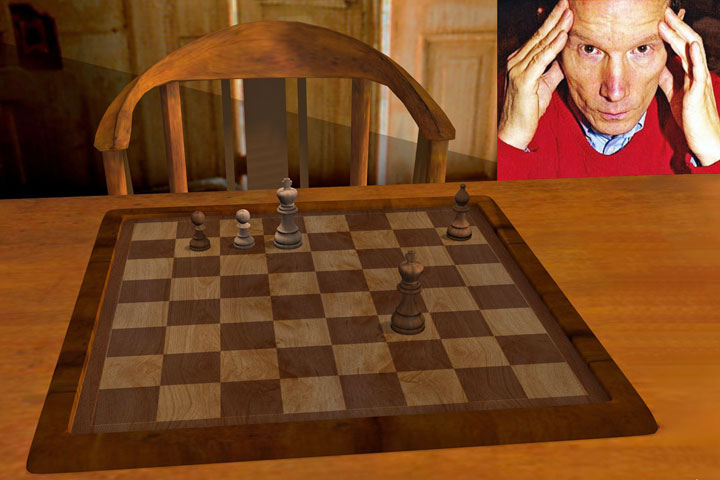Werner Keym loves classical three-movers, moremovers and studies, especially with asymmetry, castling, pawn promotion. Another focus is off-beat problems: en-passant capture, rotation, adding pieces, retro puzzles, text problems, proof games, special stipulations, jokes, etc. “Such curiosities are entertaining, exciting, funny – and often even computer-defying,” he says. His preferences are reflected in the 250 examples in his book Problem Chess Art, which is meant to entertain, rather than teach.
Here are some examples of the problems you will find in his book.
From Problem Chess Art
You have a good chance of winning a bet, if you show the study of the Sarychev brothers to your chess friends and ask the question: Which is the stupidest white move?
In Halberstadt’s pawnless study after 1.Be1! Black will not play 1…Qxc5? due to 2.Bf2 Qxf2 stalemate, but 1…Qe3! Will White now continue with 2.Bf2 or 2.Bg3?
You can enter moves on the diagrams above and try to hold the draws. The diagram will attack for Black. Click on the Notation button below the board to see your progress.
Favourite studies
Here are some studies selected for you to solve. They are our favourites. This time you must try to win against the diagram, which will defend tenaciously.
XX
The solutions to all the above problems will be posted in a week.
